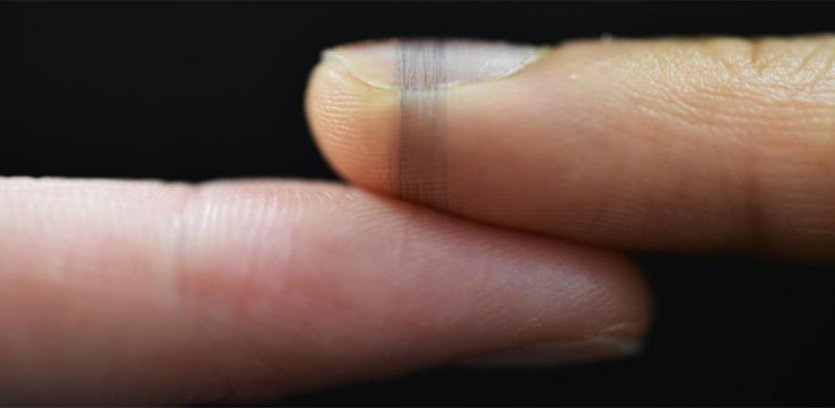
Touch-activated freshness for household fabrics
Potential applications range from healthcare and virtual reality to electronic textiles and environmental monitoring.

11th June 2024
Innovation in Textiles
|
Cambridge, United Kingdom
Adaptive fibre sensors that can be directly and imperceptibly printed onto a wide range of biological surfaces – from a finger to the petal of a flower – have been developed at University of Cambridge.
They take their inspiration from spider silk, which can conform and stick to a range of surfaces. The Cambridge fibres incorporate bioelectronics to enable different sensing capabilities.
The researchers spun them with a water-based solution at room temperature containing PEDOT:PSS (a biocompatible conducting polymer), hyaluronic acid and polyethylene oxide, with full control of the spinning parameters.
“Our spinning approach allows the bioelectronic fibres to follow the anatomy of different shapes, at both the micro and macro scale, without the need for any image recognition,” said Andy Wang of the research team. “It opens up a whole different angle in terms of how sustainable electronics and sensors can be made. It’s a much easier way to produce large area sensors.”
The fibres, at least 50 times smaller than a human hair, are so lightweight that the researchers have printed them directly onto the fluffy seedhead of a dandelion without collapsing its structure. The fibre sensors also conform to the skin and expose the sweat pores, so the wearer doesn’t detect their presence. Tests of the fibres printed onto a human finger suggest they could be used as continuous health monitors.
Low waste and low emissions
This low-waste and low-emission method for augmenting living structures could be used in a range of fields, from healthcare and virtual reality, to electronic textiles and environmental monitoring. The results have been reported in the journal Nature Electronics.
While wearable technologies with embedded sensors such as smartwatches are widely available, they can be uncomfortable, obtrusive and can inhibit the skin’s intrinsic sensations.
“If you want to accurately sense anything on a biological surface like skin or a leaf, the interface between the device and the surface is vital,” said Professor Yan Yan Shery Huang from Cambridge’s Department of Engineering, who led the research. “We also want bioelectronics that are completely imperceptible to the user, so they don’t in any way interfere with day-to-day living, and we want them to be sustainable and low waste.”
There are multiple methods for making wearable sensors, but each has drawbacks. Flexible electronics, for example, are normally printed on plastic films that don’t allow gas or moisture to pass through. Other researchers have recently developed flexible electronics that are gas-permeable, like artificial skins, but these still interfere with normal sensation, and rely on energy-and waste-intensive manufacturing techniques.
3D printing is another potential route for bioelectronics since it is less wasteful than other production methods, but leads to thicker devices that can interfere with normal behaviour. Spinning electronic fibres results in devices that are imperceptible to the user, but don't have a high degree of sensitivity or sophistication, and they’re difficult to transfer onto the object in question.
Most high-resolution sensors are made in an industrial cleanroom and require the use of toxic chemicals in a multi-step and energy-intensive fabrication process. The Cambridge-developed sensors can be made anywhere and use a tiny fraction of the energy that regular sensors require.
The bioelectronic fibres, which are repairable, can be simply washed away when they have reached the end of their useful lifetime, and generate less than a single milligram of waste.
“Using our simple fabrication technique, we can put sensors almost anywhere and repair them where and when they need it, without needing a big printing machine or a centralised manufacturing facility,” said Huang. “These sensors can be made on-demand, right where they’re needed and produce minimal waste and emissions.”
The new fibres are being commercialised with the support of Cambridge Enterprise, the University’s commercialisation arm.

Business intelligence for the fibre, textiles and apparel industries: technologies, innovations, markets, investments, trade policy, sourcing, strategy...
Find out more